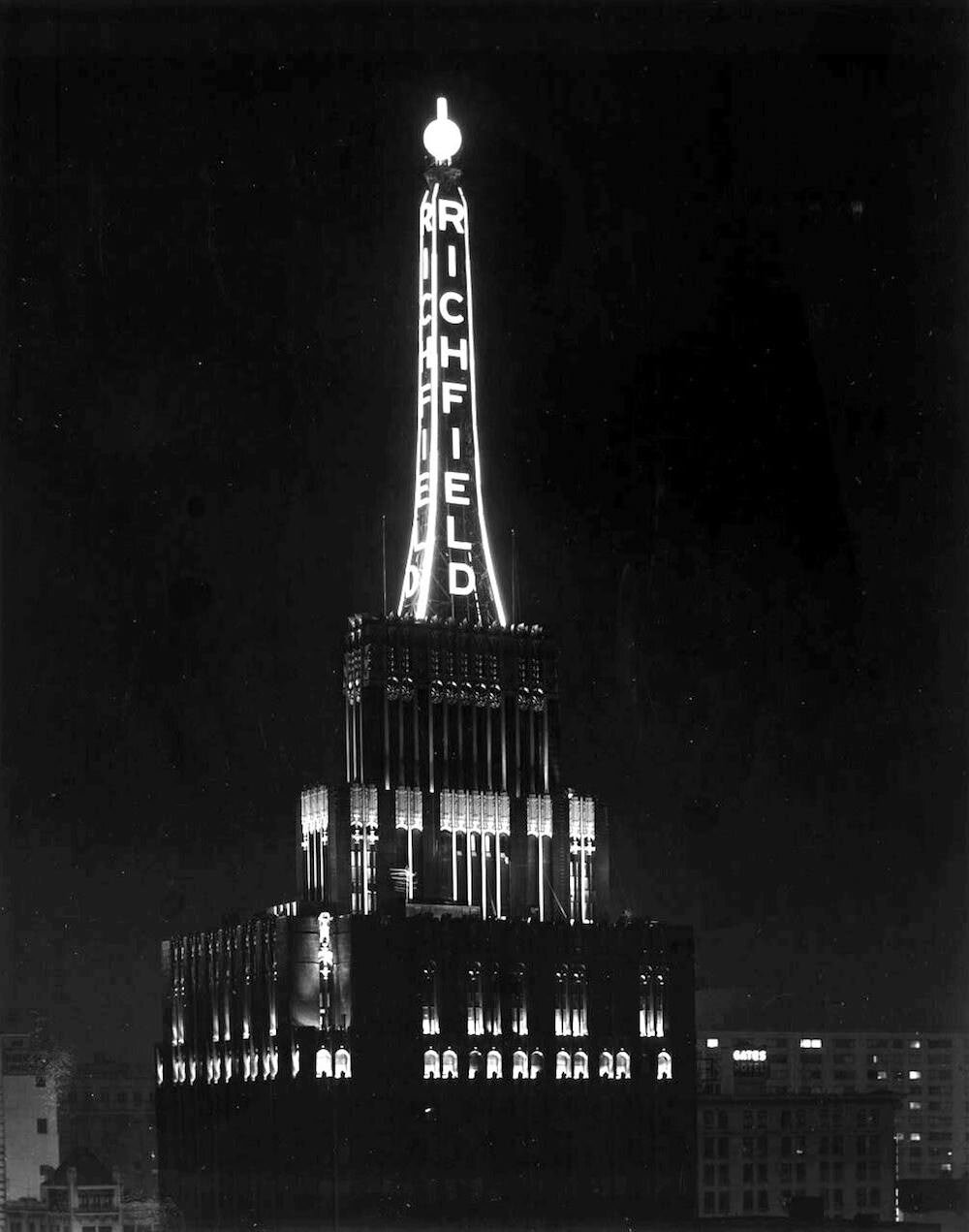Looking up at the sky in Pershing Square. I did the walking tour with my camcorder in hand.
There are a million things to see and do in L.A., yet every time I visit, I always end up in the same 6 sq miles of the 469 that the city has to offer. If I were solo or had it my way, I’d spend every day exploring the smorgasbord of architecture in Downtown L.A. Using a whole day of one’s precious vacation time in just the Central Library’s exhibit alone isn’t what you’d find in most visiting guides, especially since the rest of Downtown L.A., particularly around Pershing Square, historically carries a reputation for being unsafe and dirty. But it’s precisely this boom and bust that has preserved the historic buildings and lowered its rents, and (re-)retransformed its image into a hip and sought-after area in the last 20 or 30 years.
You can quite literally trace the different periods, from the Beaux-Arts style preceding the renaissance of the Roaring 20s (as seen in the Millennium Biltmore Hotel) to the Contemporary and Deconstructive styles from recent years (as seen in the Broad and Walt Disney Concert Hall, respectively.) But that’s too much to unpack in just one post so I recommend you do the L.A. Conservancy’s walking tour instead (like I said, before Pershing Square became the ugly park that people like to hate on, it was the epitome of the city’s Golden age. The tour starts there because all it takes is a look up at the sky to change your mind.)
I’m here to share a little about the Richfield Tower. It’s strangely the one story I actually retained from the tour and yet, it’s probably the one point in the walk that no one else caught or recalls. It’s not a stop (but it should be) and the guide only mentioned it in passing about halfway through the 3 hour exhausting trek we made in the sweltering L.A. heat. I think the reason why I remember it is the same reason why most people won’t. You can neither see it nor photograph it because it no longer exists.
The Richfield Tower, also known as the Richfield Oil Company Building, was erected 1928-29 in the Art Deco style, representative of most architecture during that time. Its architect, Stiles O. Clements, is perhaps most well-known for the Mayan Theater (reminiscent of the aesthetic pioneered by Frank Lloyd Wright.) Built to not only serve as the headquarters for the petroleum company, it also flexed the success and lucre of the business. Both the facade, made of black terra cotta and, apparently, 14-karat gold-dust accent tiles, and the 130-foot tower atop the building, embodied a “black gold” gusher. Atypically,* the whole building was covered in tiles because all 4 sides were visible from Downtown L.A. and according to legend, it quite literally shined (I know the past tense is shone, it just doesn’t evoke the same image) because of the gold dust. It only makes sense that the project cost a whopping $1,750,000 (approximately $25,366,500 today when adjusted for inflation).
*I’m not quite sure why it’s considered atypical but based on a bit of googling, I think one of the characteristics of the Art Deco style is a “primary facade.” It explains why a lot of the buildings are heavily decorated with motifs, reliefs, and sculptures on one side but completely bare or minimal on others.
Unfortunately, following a merger in 1966, the Richfield Oil Company outgrew its 12-story office despite it boasting:
two barbershops, a dressing room, showers and steam room, a rubbing (massage) room, women’s lounge, hospital room, a florist shop, a penthouse with an outside patio area, an assembly room, two private dining rooms, a serving room and kitchen, a reception room, a cigar counter, a rooftop garden, numerous first floor rentals, three-floor underground parking lot, serviced by two automobile elevator, and not to mention air conditioning throughout!
After thwarting attempts to repurpose it (they claimed only half was usable due to obsolete utilities), it was demolished in 1969 along with the neighboring structures on the block to make way for the Atlantic Richfield Plaza. Luckily, perhaps thanks to the Angelenos and preservation enthusiasts who tried to save the Richfield from its demise, the original, grandiose elevator doors were salvaged, and presently stand (unmarked?) in the lobby of the City National Plaza, only offering passerby an infinitesimal reference to the grandiose scale of the icon that illuminated the Downtown L.A. area just a couple decades before.
It was a rare exemption from the city’s height limit ordinance of 1911.
The elevator doors then.







